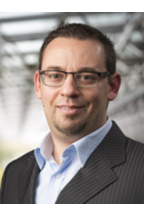Matteo Mariantoni

Biography
Dr. Mariantoni has a strong background in cutting-edge research on superconducting qubits and circuit quantum electrodynamics. He specializes in the experimental realization of low-level microwave detection schemes and pulsing techniques that allow for the measurement of ultra-low quantum signals generated by superconducting qubits coupled to on-chip resonators.
Research Interests
Quantum Computing
Quantum Error Correction
Digital Quantum Emulations
Superconducting Quantum Circuits
Quantum Science
Scholarly Research
Education
2009 PhD Physics, Technical University Munich, München, Germany
2003 MSc Physics, Chalmers University of Technology, Gothenburg, Sweden
Awards
2014, Early Researcher Award, Ontario Ministry of Research and Innovation
2013, Alfred P. Sloan Research Fellowship, Alfred P. Sloan Foundation
Affiliations and Volunteer Work
Faculty, Institute for Quantum Computing
Teaching*
- PHYS 242 - Electricity and Magnetism 1
- Taught in 2020, 2021, 2022, 2023, 2024, 2025
- PHYS 342 - Electricity and Magnetism 2
- Taught in 2020, 2021, 2022, 2024, 2025
- PHYS 442 - Electricity and Magnetism 3
- Taught in 2020
* Only courses taught in the past 5 years are displayed.
Selected/Recent Publications
Yu Chen, P Roushan, D Sank, C Neill, Erik Lucero, Matteo Mariantoni, R Barends, B Chiaro, J Kelly, A Megrant, JY Mutus, PJJ O'Malley, A Vainsencher, J Wenner, TC White, Yi Yin, AN Cleland, John M Martinis Emulating weak localization using a solid-state quantum circuit Nature communications 5 (2014)
J Tournet, D Gosselink, GX Miao, M Jaikissoon, D Langenberg, TG McConkey, M Mariantoni, ZR Wasilewski Growth and characterization of epitaxial aluminum layers on gallium-arsenide substrates for superconducting quantum bits Superconductor Science and Technology 29 (6), 064004 (2016)
JH Béjanin, TG McConkey, JR Rinehart, CT Earnest, CRH McRae, D Shiri, JD Bateman, Y Rohanizadegan, B Penava, P Breul, S Royak, M Zapatka, AG Fowler, M Mariantoni The Quantum Socket: Three-Dimensional Wiring for Extensible Quantum Computing arXiv preprint arXiv:1606.00063 (2016)
J Wenner, Yi Yin, Erik Lucero, R Barends, Yu Chen, B Chiaro, J Kelly, M Lenander, Matteo Mariantoni, A Megrant, C Neill, PJJ O’Malley, D Sank, A Vainsencher, H Wang, TC White, AN Cleland, John M Martinis Excitation of superconducting qubits from hot nonequilibrium quasiparticles Physical review letters 110 (15), 150502